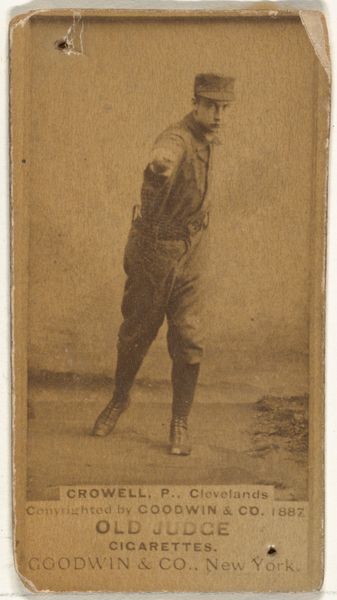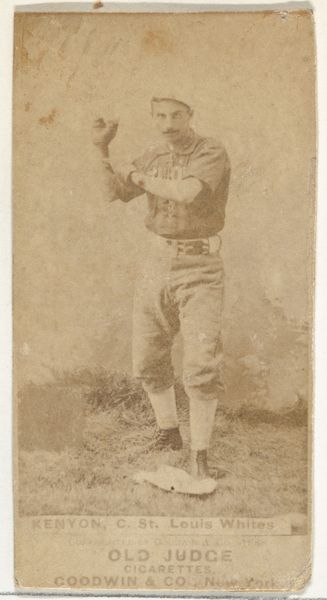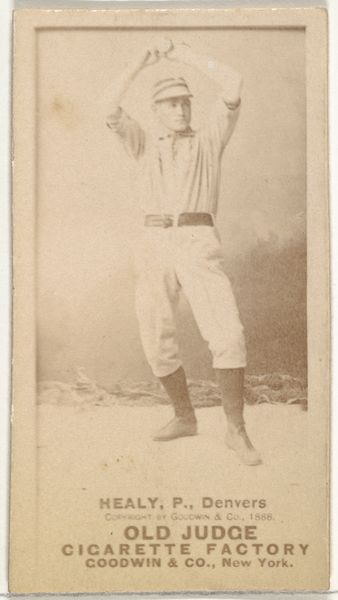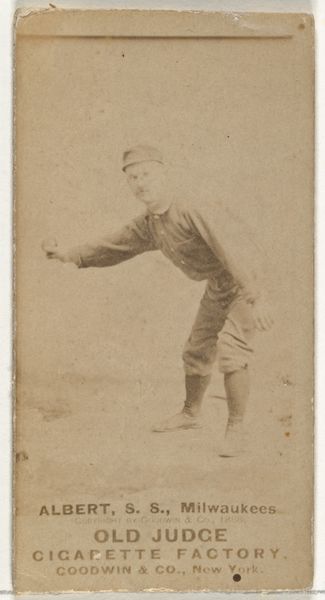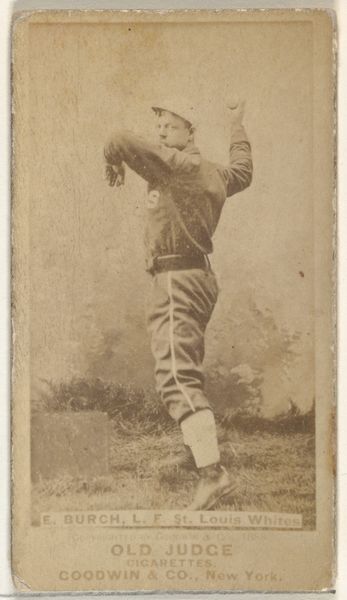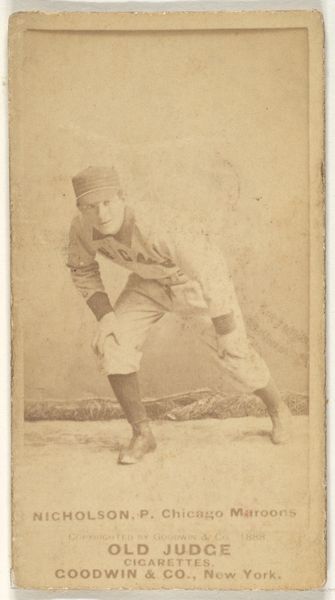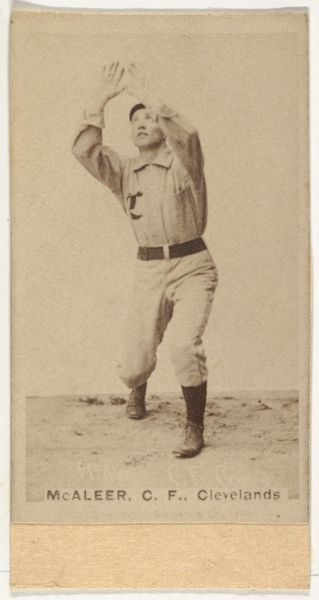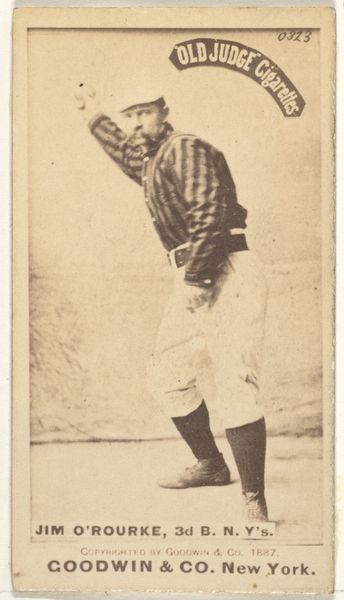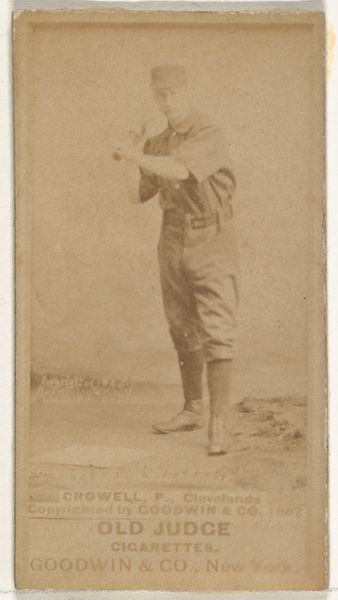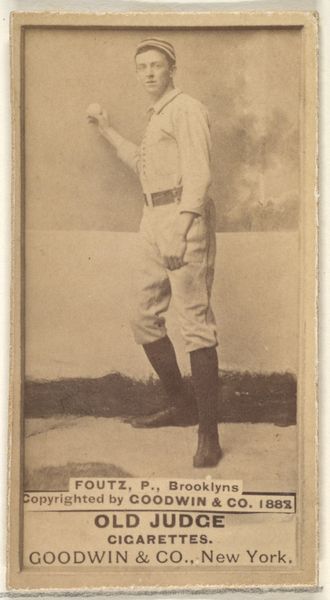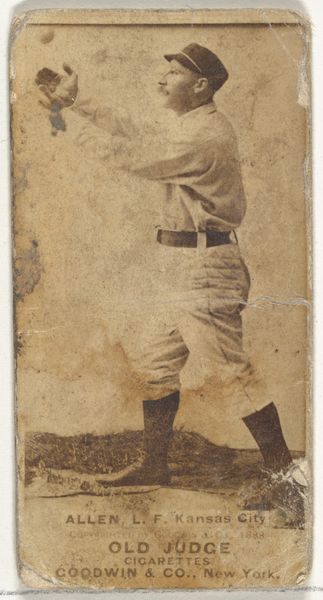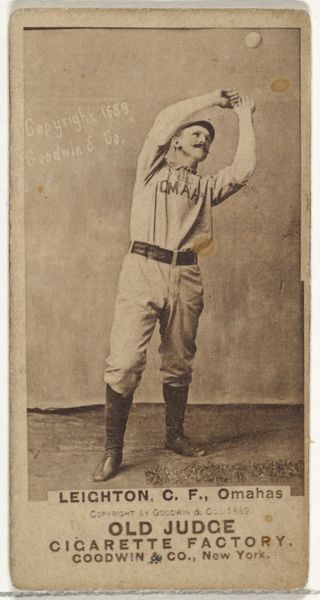
Burch, Left Field, St. Louis Whites, from the Old Judge series (N172) for Old Judge Cigarettes 1888
0:00
0:00
print, photography
#
portrait
# print
#
baseball
#
photography
#
pencil drawing
#
men
#
genre-painting
Dimensions: sheet: 2 11/16 x 1 3/8 in. (6.9 x 3.5 cm)
Copyright: Public Domain
Editor: This is "Burch, Left Field, St. Louis Whites," a baseball card print from 1888, created by Goodwin & Company. It looks like it was made as an advertisement for Old Judge Cigarettes. What's striking to me is the way it seems to capture a fleeting moment of athleticism and yet serves such a commercial purpose. How do you interpret the confluence of sport, portraiture, and advertising? Curator: It's fascinating how seemingly disparate elements come together here. These baseball cards weren't just about selling cigarettes; they played a significant role in popularizing the sport itself. Before mass media, these cards were a primary way fans connected with players. Think about the power of images in constructing celebrity, even in the late 19th century. Editor: So, these cards were almost like proto-social media influencing who fans admired and supported? Curator: Precisely! And the "Old Judge" series, specifically, elevated these athletes through photographic portraits akin to those commissioned by the elite. It’s democratizing imagery but still filtered through the lens of commercialism. It invites us to examine the social function of early baseball, celebrity culture, and the rising power of consumerism. How does the card's condition and aging affect your perception? Editor: It gives it a feeling of authenticity but also fragility, making you think about how easily these cultural artifacts can disappear. Thanks, I am seeing new layers in this work. Curator: Exactly. Considering its dual role, it speaks volumes about the cultural and economic forces shaping leisure and identity at the time. The simple image holds surprising complexities when viewed through a historical lens.
Comments
No comments
Be the first to comment and join the conversation on the ultimate creative platform.
